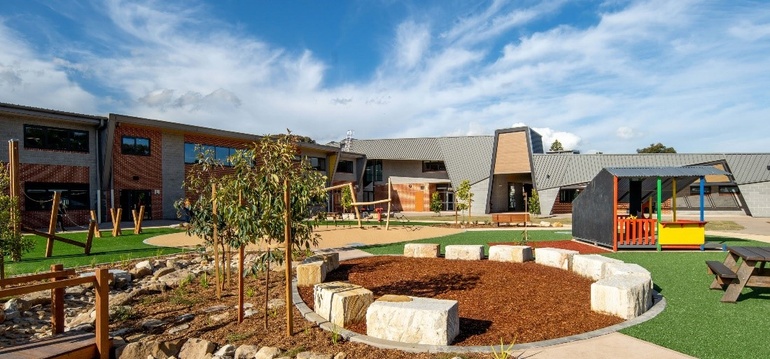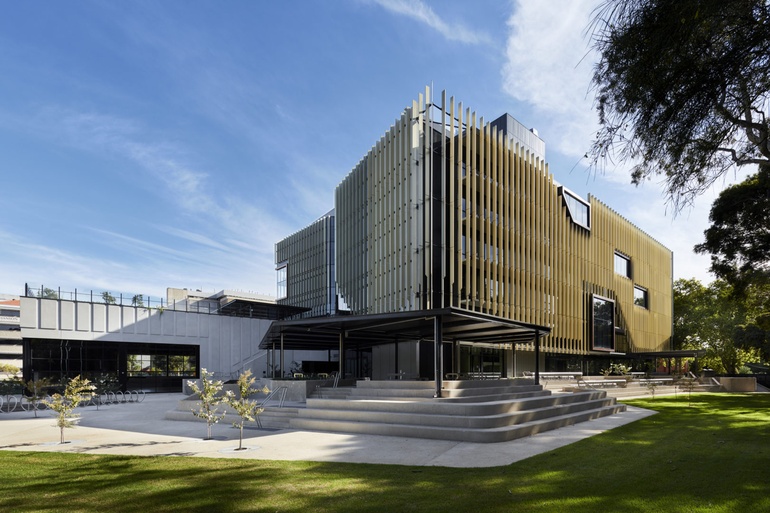It’s a new school year and there are many reasons to be excited if you are heading back to learn or work in a Green Star school.
By now most people in the industry are well aware of the benefits of buildings, homes, and communities that are more efficient, resilient and healthy – but what about the buildings the next generation are learning in?
A better place to work and learn
Schools across the country are leading the way towards healthier learning environments that are treading lighter on the planet — but what does a better building mean for educators and students?
By the time a child graduates, they have spent more time in a school building than anywhere else, apart from their home, which means it will have considerable impact on their health and wellbeing.
Studies shared by the World GBC have proven that well-ventilated buildings with good indoor air quality, acoustics and enhanced levels of thermal comfort, lead to better cognitive performance, sleep and a wide range of additional tangible benefits. Here we take a look at how a handful of Australian schools are transforming the places where our children learn and play.
When you build a Green Star school, you receive health and productivity benefits while also creating a space that lessens your harm on the planet.
Kyeemagh Public School, NSW
Kyeemagh Public School, located in southern Sydney, has recently been awarded a Green Star certification for its best practice, innovative and sustainable design, with the school uniquely shaped in an origami inspired design.

What went into the Green Star rated design?
- Rainwater tanks collect water for the school gardens and vegetable patch.
- Insulated windows with double-glazed glass ensure energy efficiency.
- Building mechanical systems minimise the presence of harmful microbes.
- Specialised acoustic treatments of the wall and ceiling elements reduce noise pollution.
- Cycling and walking to school is encouraged through pathways and bike storage facilities.
- A portion of construction materials, including timber, were responsibly sourced and/or came from a sustainable supply source.
Adelaide Botanic High School, SA
South Australia’s first vertical secondary school, Adelaide Botanic High School opened its doors in 2019. A special design factor in this project was that it was, in part, a conversion of an existing 1960’s building – presenting an opportunity to showcase circularity in design.

So, what did it take to achieve a 5 Star Green Star rating?
- Reused the existing Reid Building to the north, with the main structure and embodied emissions retained.
- 60kW solar PV system reducing electricity consumption and emissions.
- 95% diversion rate for construction and demolition waste.
- Extensive daylight and views to the outdoors, including the adjacent Adelaide Botanic Gardens.
- High acoustic performance, with noise generating facilities such as technical workshops in close vicinity to quieter learning spaces.
- The school was used as a state trial to implement multiple waste streams (landfill, co-mingled recycling, and organics) and Method recycling bins provided adjacent waste generation areas.
Amaroo Environmental Education Centre, QLD
Operated by the Queensland Department of Education, Amaroo EEC is an environmental educational centre with a focus on environmental sustainability and Aboriginal and Torres Strait Islander perspectives located in Kleinton. Amaroo EEC delivers highly effective educational programs for schools P-12 in its 5 Star Green Star rated ‘Eco-classroom’.

What can expect from a 5 Star rated 'Eco-classroom'?
- Orientation makes the most of the passive solar design.
- The four direct current (DC) ceiling fans used in the classroom are 60% more energy efficient than alternating current (AC) fans.
- The choice to use recycled fittings, 100% recycled timber to hold up the pergola, and construct the exterior sink out of 95% recycled materials keep valuable resources in circulation.
- Two high dormer windows face south to let in natural light and operate with remote controlled louvers to allow for a natural flow of air throughout the Eco-classroom.
- 6.5Kw solar panels on the north-facing roof along with a solar hot water system, and a Tesla Powerwall 2 battery.
- Metered water tanks and environmentally friendly waste water treatment system for water conservation, as well as a small-scale wind-turbine on site.
Top picture credit: Adelaide Botanic High School, by Cox Architecture